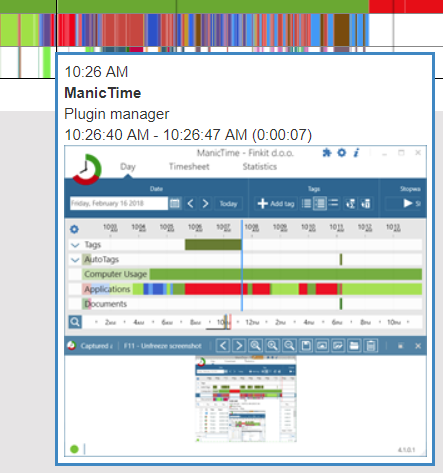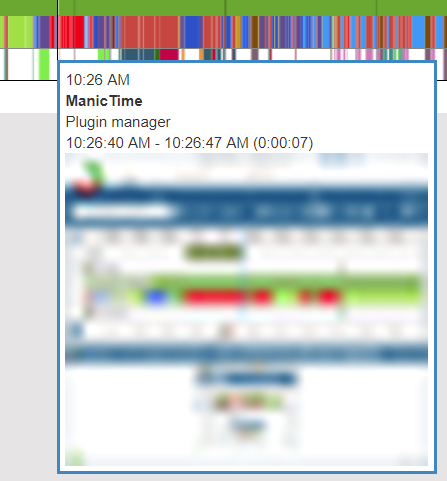On server web pages click on the Administration link to get to the administration section.

Most of the settings have help descriptions on the right side.
General
Various display settings used throughout the site.
Site url - this is the URL which will be used in email reports. So this should be some public URL, which will point to this site, otherwise links in email reports won't work correctly.
Work time
Read more about Work time.
Allowed tags
Read more about Allowed tags.
License
The license will also be used on all connected clients. If you update it, it will update on all clients as well.
Screenshots
Enable screenshots and set the folder where they should be saved. If you have a lot of users, choose a hard drive with a lot of free disk space.

|
| Server screenshot settings |
You can also choose to have the screenshots blurred. If you use this feature, screenshots will be blurred before ManicTime sends them to the server. The idea of blurred screenshot is that text is unreadable, but you still have a sense of what screenshot represents. You can do this in Administration, Client settings
Once you are done with the settings, you also have to configure the client to start sending screenshots to the server. On ManicTime client (v4.1 or later), go to Edit server, Publish tab and check Publish screenshots.

|
| Configure ManicTime to send screenshots to the server |
Also make sure, that sending screenshots is enabled in Administration -> Client settings.
Usage
You can view the screenshots on Personal -> Day view or on Reports -> Timelines. If you mouse over the timelines, screenshot will show up in the tooltip.

|

|
| Screenshot in tooltip | Screenshot in tooltip - blurred |
You can also look at the files with some other image viewer, all the images are now on the server in the folder you specified.
Disk usage
In Administration -> Diagnostics, you can see how much disk space is used by screenshots.
Productivity
Read more about Productivity.
Leave types and Annual leave
Read more about Leave.
Shared reports
Read more about Shared reports.
Users and teams
Read more about Users and teams.
Email and Email reports
Cloud (ManicTime Server) can send weekly, monthly and yearly email reports. You can configure email reports to send an email for:
- whole organization
- specific team
- specific user
There are three reports available:
- Summary - A summary report with various data
- Arrive late / Leave early violations report - A list of users who arrived too late or left too early based on settings in Administration, Site settings, Work time
- Overtime violations report - A list of users whose total work time falls outside the defined overtime threshold, based on the settings in Administration, Site settings, Work time. For example, if the work time is set to 8 hours per day and the email is sent on a weekly basis, then the expected total is 40 hours per week. If the threshold is set to 5, the report will include all users who worked less than 35 hours or more than 45 hours. If the email is sent on a daily basis, then using a 1-hour threshold may make more sense — it would report all users who worked less than 7 hours or more than 9 hours.
All values in the report link back to the site, so you can do further analysis.
Configuration file
Read more about Configuration file.
Client settings
Read more about Client settings.
Connected devices
This view will show you all devices which are sending data to the server.
Diagnostics
Any errors which occur while processing data and generating statistics will be reported here.
